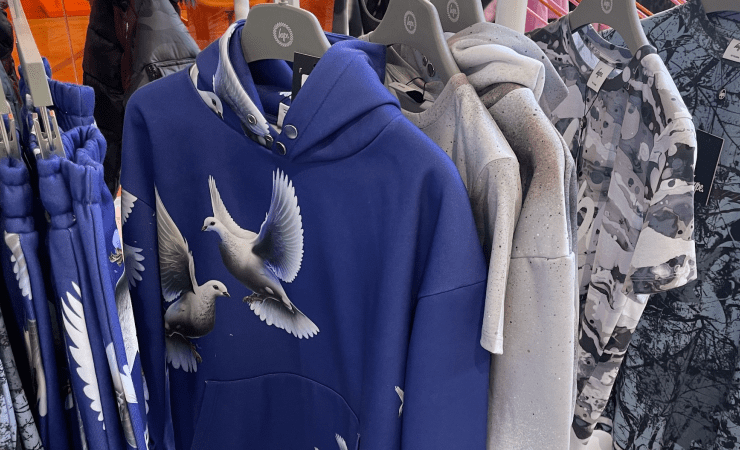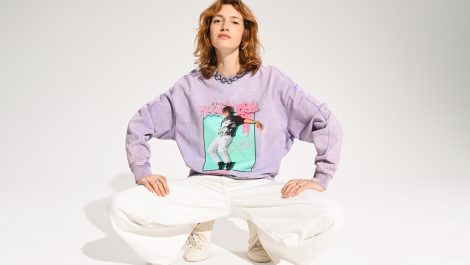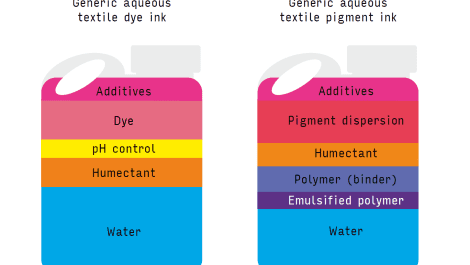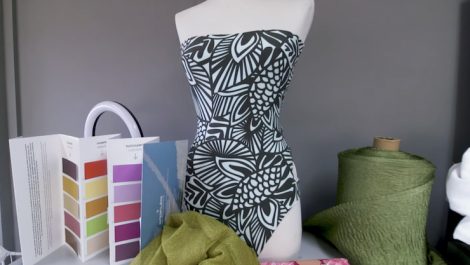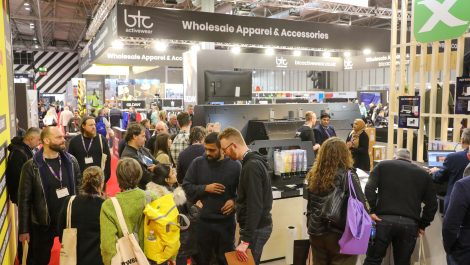A British streetwear brand is shortening its time to market, expanding its creative possibilities and improving its sustainability credentials by tapping into Kornit’s production workflow network
Hype is a British streetwear brand catering to a wide range of consumers, offering bold, bright colours for a ‘hip’ image. The brand’s brash in-your-face impressions adorn T-shirts, kidswear, backpacks, hoodies, intimate apparel, and other items, and are sold both via the company’s own website and through a growing network of retailers that including Next, Zalando, BooHoo, John Lewis and The Very Group.
‘We like to see ourselves as a lifestyle brand,’ says Jade Bell, marketing manager at Hype. ‘Hype is all about showcasing your individuality and personality, so we like to make sure our core band DNA values are showcased through our products. We have the Gen Z audience, the Millennials, the younger generation and also adults – a huge range of customers.’
The company’s marketing strategy regularly includes collaborations and public relations exercises involving major brands such as Lego, Disney, Universal, Warner Brothers, Coca-Cola, Budweiser and KFC.
Hype saw an opportunity to expand its market share and fulfilment capabilities by tapping into the growing KornitX Global Fulfilment Network, which Kornit says offers fast and sustainable on-demand digital fulfilment via sites near the end consumer, describing the network as ‘a lean, low-risk mechanism for producing consistent, high-quality gear with limited up-front technology investment’.
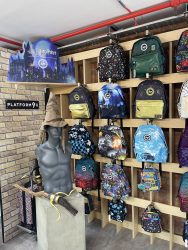
Another part of the business is collaboration with major brands
‘Kornit allows us to respond a lot faster to trends,’ confirms Jake Paling, who oversees art and data handling for Hype. ‘Historically, if something gets really popular, [and] we take two or three months to react to it, it’s already gone. Direct-to-garment is really useful for that, and it allows us to have more flexibility, as well. It gives us a lot more freedom with our designs – we can create.’
‘We can explore avenues that we possibly wouldn’t have explored before,’ adds Luke Russell, head of design at Hype. ‘We can take a few more risks in terms of the designs we’re creating. We can put five designs onto a website and see if it sticks, instead of having to commit to one with a queue of 300 or 500.’
Cleaning up the act
As well as enabling Hype to become more prolific in creative terms, the Kornit technology helps address the sustainability imperative, in response to increasingly strict regulations throughout Europe and the broader fashion industry.
‘When a product comes to the end of its shelf life, it’s been there long enough to discount it, get it off the shelves and into the customer’s wardrobe rather than sticking it in a landfill,’ said Mark Ford, Hype’s head of e-commerce operations. ‘We don’t want to take it to the landfill. We’re very conscious of the environment. We won’t just work with anybody; we look at the CO2 emissions of Royal Mail, DPD, and everything else that goes on inside the business, rather than just fast fashion, throw it out as quick as we can.
‘I think there’s a lot of greenwashing within the industry,’ says Mr Russell. ‘In this modern day of social media, content is so quick to market and it means the consumer is expecting newness constantly. They want to hit a website and see five, 10, 15 new designs every day. It’s a real struggle for Hype to keep up with that and keep the sustainable message present. Introducing direct-to-garment into the business means we can print on demand to cut inventory within the warehouse.’
By establishing a localised fulfilment strategy and working with a wide array of retailers eager to market new products for all ages, Hype meets this challenge while growing its operation.
‘The long-plan goal would be to open up a global network for print-on-demand,’ says Mr Russell. ‘We could print garments in multiple locations, while ensuring each product met our quality standards. But we wouldn’t have to hold stock in multiple locations across Europe, Asia and the UK; we could sell an item and distribute it with no inventory. We’re going to be able to really reach a mass audience, and the money we were spending on inventory can be dedicated to other areas within the business.’
Conquering the peaks
The back-to-school and Black Friday periods bring peak demand, so being able to vary production in real time, in response to what is actually selling, helps eliminate over-production wastage, as well as affecting the bottom line. According to Mr Ford, the company has offered up to 40,000 unique SKUs during peak periods, which can equate to 250,000 individual items.
‘We were storing (our inventory) in a warehouse, so we were sitting on a lot of stock, about 30% of which doesn’t sell within the time window,’ explains Shiv Arora, project manager at Hype. ‘It’s not great for the business and it’s not great for the environment, either. And another thing is, obviously, to get that stock, it needs to come through their supply chain and it’s coming from China or Turkey or Pakistan, so it has its own carbon footprint as well.’
Many of these issues can be avoided via use of the KornitX network, allowing Hype to integrate with fulfillers local to their marketplaces as required, and producing only what is being sold.
‘This technology has opened the door for us for these marketplaces and benefits like not having to worry about inventory sinking,’ says Mr Arora. ‘Using Kornit we can just launch our designs overnight, and it works for us and it works for them. It’s all automated, so as a customer you’re placing an order on Next, and you simply get the order from us. We literally pick, pack and ship the order same day or next day, and you have nothing to worry about.’
Currently Hype is operating in 27 countries. While the UK remains its largest market, the company is experiencing ‘considerable’ growth throughout Europe and even the Far East. It is currently integrating with Walmart and Costco to expand the brand’s footprint in the United States, in addition.

